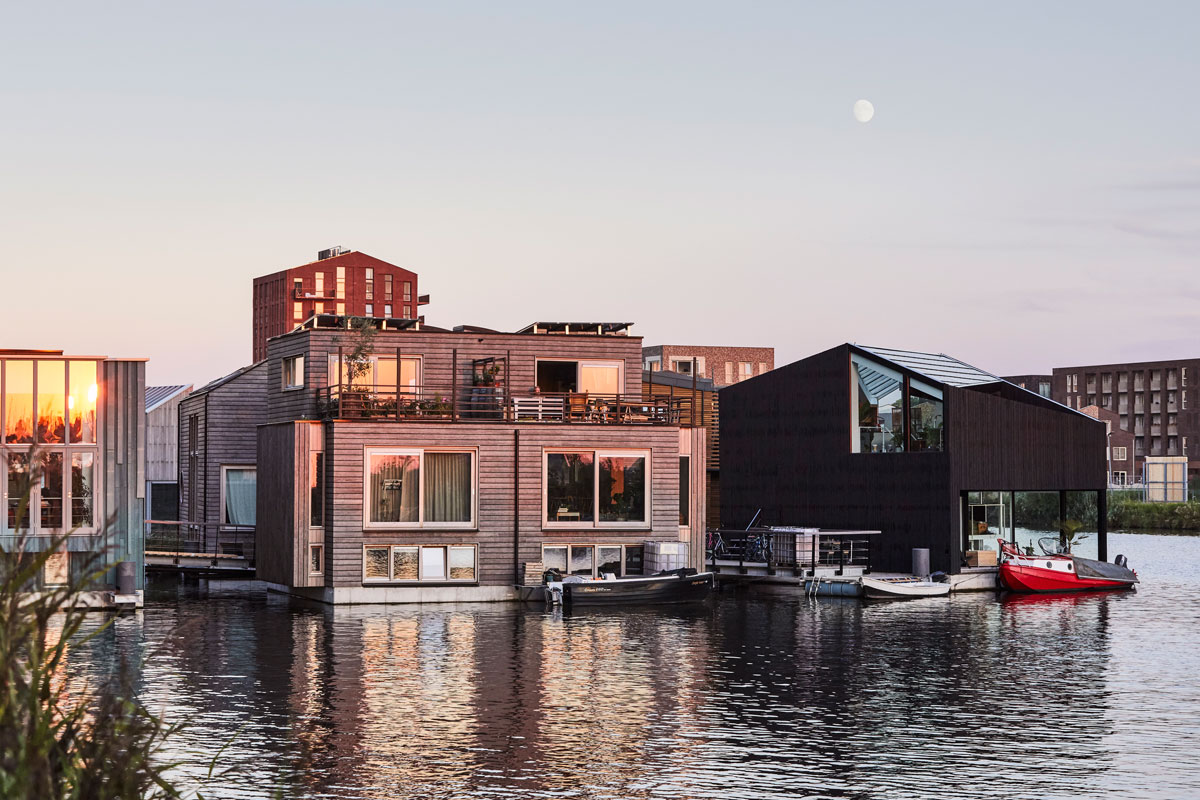Story at a glance:
- Material selection plays a huge role in designing buildings that last, and what sustainable building materials you choose matter.
- States like California are looking at water management as part of their long-term resiliency plan.
- Building information modeling allows for a collaborative process that can save projects time and money in the long run.
Resilient design is the intentional design of buildings, landscapes, communities, and regions, aimed at responding to natural and manmade disasters and disturbances as well as climate change—including sea level rise, heat waves, and regional drought, according to the Resilient Design Institute (RDI).
Resilient design principles run the gamut from developing diverse systems and passive solutions to designing buildings that will last longer and using reclaimed resources.
Consider these resilient design principles before you design your next project.
1. Prioritize Microgrids & Renewable Energy

Microgrids powered by renewable energy help foster resilience by building energy independence. Photo courtesy of Cushing Terrell
As the price of electricity continues to rise and extreme weather events cause outages to become more and more frequent, microgrids have quickly become a staple of resilient building design—especially microgrids whose electricity comes from multiple renewable sources like solar, wind, and geothermal. These green microgrids are capable of operating independently from a region’s main power grid and so are not subjected to the fluctuating costs and availability of fossil fuels, nor are they affected by rolling blackouts or forced shutdowns.
And while we often think of microgrids as being stand-alone systems reserved for remote homesteads, they can in fact be connected to primary grid networks and serve urban communities. “Microgrids can operate autonomously (in ‘island mode’) or be connected to the larger utility grid, making it more adaptable and resilient,” Nathan Bronec, project manager and electrical engineer with Cushing Terrell’s Infrastructure group, previously wrote for gb&d.
“When a microgrid connects to the primary grid, it parallels the grid, matching its characteristics, such as voltage, frequency, and phase rotation. Depending upon the generation capacity, in circumstances such as a partial shutdown of a central power plant, utilities can use the microgrid as a backup generation source.”
Linking to the primary grid can help green microgrids counteract the variability of certain renewable energy sources like wind or solar, but it isn’t always necessary or feasible. Batteries and other energy storage systems can also help keep microgrids running at all times while remaining wholly independent. The Cushing Terrell-designed Lamar Buffalo Ranch in Yellowstone National Park, for example, is 100% off-grid and boasts a microgrid system consisting of photovoltaic panels and a micro-hydro turbine; all of the grid’s excess energy is stored in recycled nickel-metal hybrid car batteries provided by Toyota.
2. Leverage Passive Design to Your Advantage
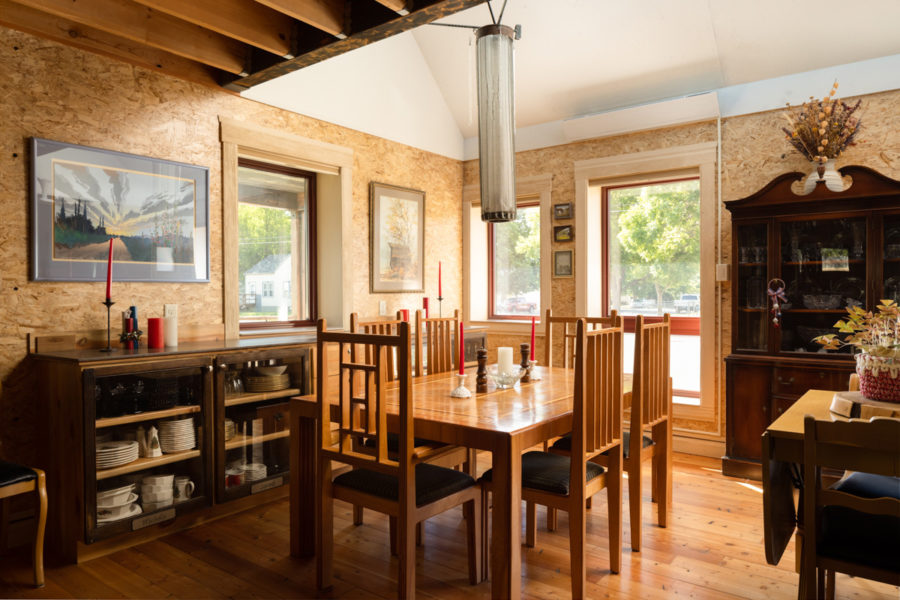
Despite not having an active heating and cooling system, the Urban Frontier House remains comfortable year round thanks to the use of passive design strategies. Photo by Nathan Satran
A building that is capable of passively regulating its internal environment is better suited to weathering changing temperatures and climatic conditions than one that relies primarily on active systems for heating, cooling, and ventilation, as the latter can be rendered useless in the face of power outages and energy shortages.
The Passivhaus Institute and Phius consider the following strategies integral to the design of resilient passive buildings:
- Use of continuous insulation that minimizes or eliminates thermal bridging.
- Construction of an extremely airtight, durable, and resilient envelope.
- Installation of high-performance double- or triple-paned windows.
- Implementation of a balanced heat-and-moisture recovery ventilation system.
- Minimization of space conditioning system because of lower space conditioning loads.
Passive design also considers things like site orientation and strategic window placement to make the most efficient use of solar energy and facilitate natural ventilation.
When implemented correctly, passive design strategies can help ensure a comfortable interior environment even in regions that experience extreme temperature fluctuations throughout the year. Montana, for example, can see temperatures drop to -36°F in the winter and rise to a sweltering 108°F in the summer—but the Urban Frontier House in Billings requires no mechanical heating or cooling thanks to its extensive use of passive design strategies.
Designed by High Plains Architects, the LEED Platinum-certified home features a super insulated envelope made from overlapping structural insulated panels, employs strategically-placed windows and skylights for natural ventilation, and utilizes blinds to influence heat loss/gain. During the winter, the Urban Frontier House maintains a comfortable temperature by circulating fresh sun-warmed air from its garden room throughout the property with the help of a 95% efficient Zehnder energy recovery ventilator.
3. Design for Adaptability & Upgradability
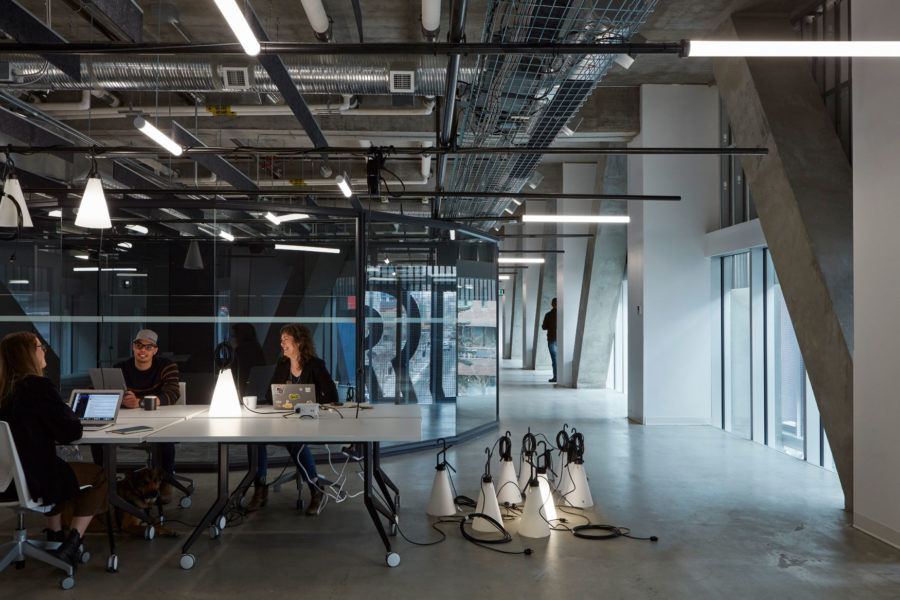
Kasian Architecture’s 9th Avenue Parkade anticipates its own obsolescence and includes resilient design elements that will allow it to adapt and evolve to suit changing societal attitudes. Photo by James Brittain Photography
Buildings that are capable of adapting and evolving alongside changing needs and conditions are more likely to remain in use, no matter what the future holds. “Resilient design is not just about weather events,” Megan Valentine, director of sustainability for KTGY, previously told gb&d. “It’s also about any foreseen or unforeseen changes—designing places that are inherently flexible to pandemic response, technological advancements, economic shifts. At its essence resilience is designing for adaptability.”
Building flexibility into the design of new development projects and renovations often means including elements like an open floor plan, movable walls and partitions, and multi- or mixed-use spaces—but it can also look like designing spaces that are solar-ready, including modular elements that can accommodate expansion and reconfiguration, planning for ease of maintenance, and much more.
Calgary’s 9th Avenue Parkade, for example, is a modern parking garage designed by Kasian Architecture and 5468796 Architecture to remain useful even as societal attitudes move away from oil-based vehicles. To prevent the structure from becoming redundant in the very near future, Kasian designed the 285,000-square-foot, 510-vehicle garage in a manner that will allow it to transition to office, residential, or light industrial space over time.
This was achieved through the inclusion of higher-than-average ceilings, floor plates designed to support heavier loads than the typical parkade (to accommodate the additional weight of furniture, people, et cetera), shallow inclines that create an infinite floor plate, and a large span post-and-beam framing system. “Having an adaptable frame is the foundation for developing an adaptable building,” Joanne Sparks, associate and project architect at Kasian Architecture, Interior Design and Planning, wrote in a previous gb&d article. “This system, absent of intermediate columns and coupled with the expanded floor-to-floor height, allows for a variety of future uses without having to compromise on the interior layout.”
4. Factor for Climate Change & Disasters
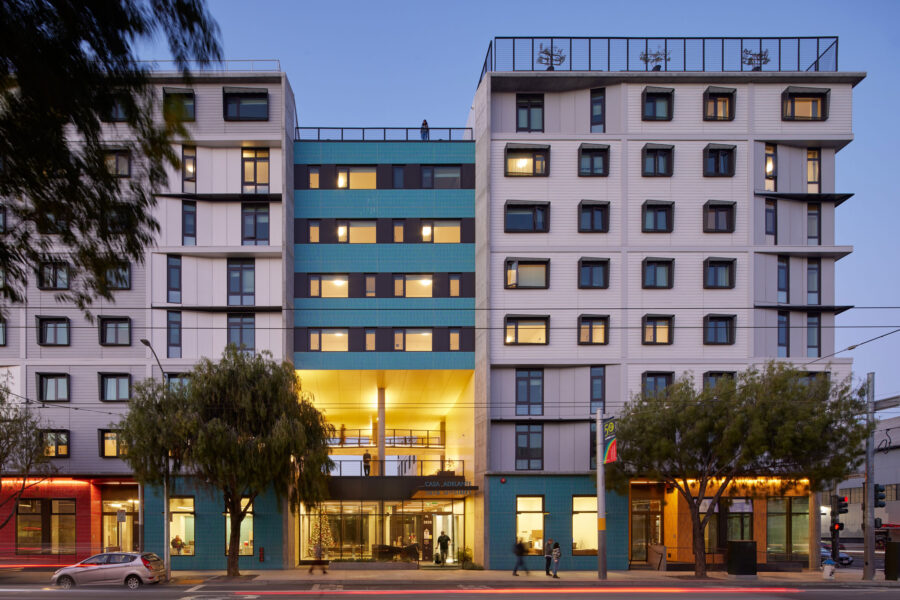
Casa Adelante demonstrates resiliency in many ways, especially when it comes to preparing for natural disasters. Photo by Bruce Damonte
Brad Jacobson of architecture firm EHDD says designing for the future starts with recognizing the risks of a changing climate. “Factor in future climate and sea level rise when siting buildings and designing mechanical systems. Arup Engineers developed a tool that allows you to overlay your energy model with projections of future climate conditions to assure your building design can keep occupants comfortable in the near future,” Jacobson said in a previous article for gb&d.
And that’s just one of the many resources available to architects and engineers when it comes to designing for climate change—Arcadis’ CLIMATESCOUT is another tool that makes designing around a changing climate much less daunting. CLIMATESCOUT uses the Köppen-Geiger climate classification system, which recognizes a total of 31 unique climate zones around the world based on differences in seasonal temperatures, precipitation levels, and vegetation types. Users can choose the location of their project on this climate map and CLIMATESCOUT will identify the most applicable building scale design strategies from Architecture 2030’s Palette, as well as provide a visual, multi-layered diagrammatic representation of those strategies in action.
Resilient design also means anticipating and planning for disasters. The Casa Adelante multifamily housing complex, for example, was raised several inches above the region’s 100-year floodplain in response to California’s worsening flood events, while the building’s HVAC system was specifically designed to mitigate the effects of the state’s infamous wildfires. “A lot of multifamily housing developments, particularly affordable housing in San Francisco, are going to a more localized solution with ventilation louvers on the side of the facade of the exterior wall, which provides fresh air to the units,” Ryan Jang, principal at Leddy Maytum Stacy Architects—the firm who designed the project—previously told gb&d.
“In our case we decided to bring air in centrally through larger air handling units at the roof, such that they’re filtered at a pretty high filtration rate so clean, tempered air can always be delivered down into the units, and those filters can be easily changed by maintenance personnel instead of changing filters at each unit. To have filtered air flow down from the roof through the corridors and into each of the units is important in Northern California with fire danger becoming more prevalent every year.”
5. Establish an Asset Management Plan
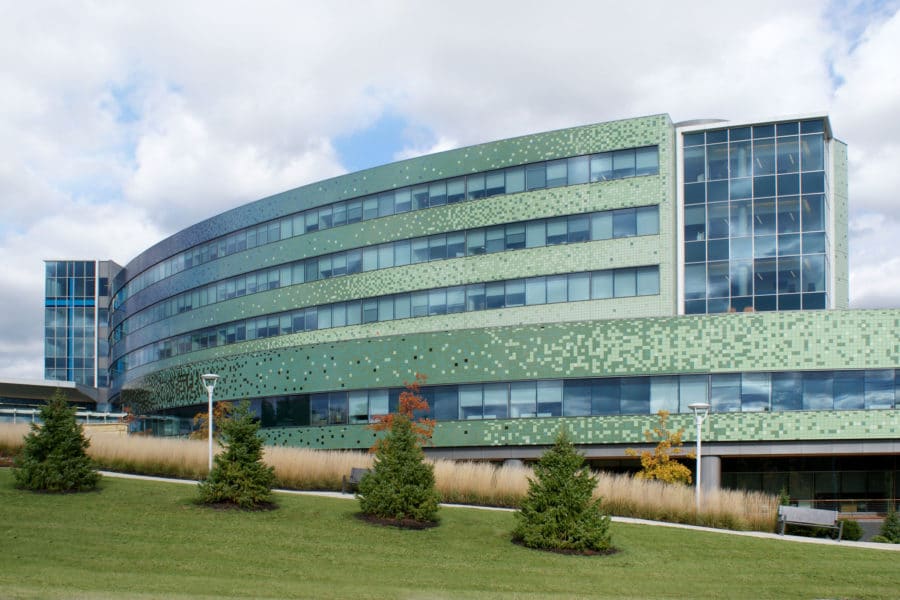
Photo courtesy of HEAPY
Leaders in health care infrastructure have been working to improve resilience for decades and, in the face of the pandemic, an even stronger commitment has been established by some to improve infrastructure, planning, and technology.
The leaders at HEAPY have said real resistance begins by understanding what you have. Brian Arbogast and Daric Hess at HEAPY previously wrote for gb&d about the need for an asset management plan as one of the major resilient design principles. “A Campus Asset Management Plan (CAMP) can help facilities be more resilient. It allows organizations to understand the condition and importance of major equipment, gives timelines and budgets to upgrade or replace, and also provides a quick access to equipment zoning and key locations for system isolations. (Think gas isolation valves, AHU zoning, and domestic water mains, to name a few.)”
In health care, such a plan looks to answer questions like:
- Where do you have single points of failure for critical systems?
- Do you know the age and condition of the air-handling unit serving your operating rooms?
- Do you know where the shut-off valves are for the O2 system serving the ICU?
- Can you quickly point to where you have cross-connections in the domestic water systems?
- Will your network support remote users?
- Is your BAS secure?
6. Incorporate Building Information Modeling

Get everyone on the same page from the start of your project, and keep everyone up to date with building information modeling. Photo courtesy of Sage
BIM, or building information modeling, can also be a catalyst for better building, as it invites contractors, owners, architects, engineers, and whole project teams to get on the same page early on in the design process.
This shared resource establishes a basis for decision-making throughout a project’s life cycle and assists in problem solving, solution simulations, and impact analysis, according to Dustin Stephens, global head of construction at Sage, which offers construction financial, operations, and preconstruction software solutions.
Among BIM’s many benefits, Stephens previously told gb&d that these solutions allow teams to identify incongruences before you have to pay for them, increase quality control and design coordination to decrease remedial work, and impact the design process for higher quality project delivery.
7. Use Sustainable Building Materials
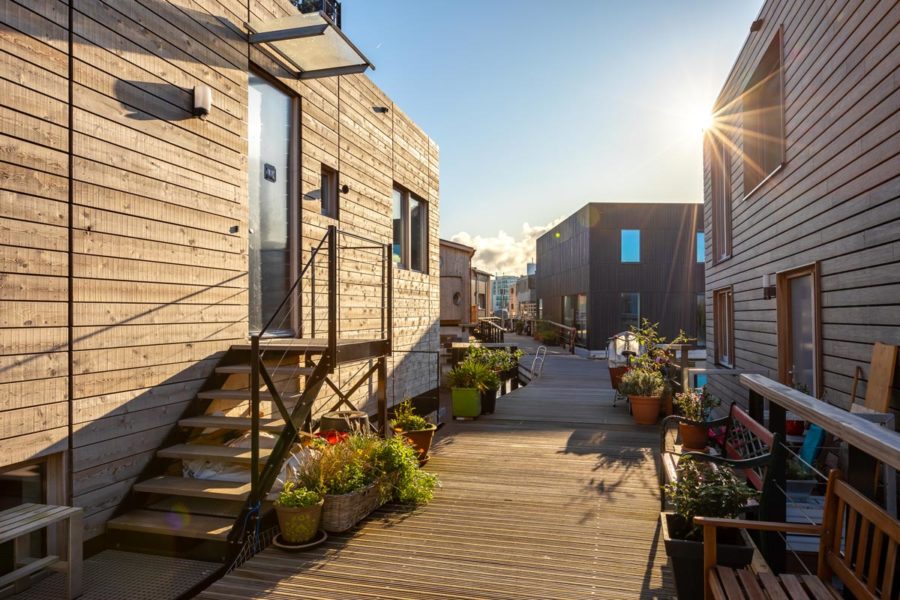
The use of sustainable building materials is one of many resilient design strategies employed by the Schoonschip Amsterdam floating neighborhood. Photo by Isabel Nabuurs
Completed in 2020, Schoonschip Amsterdam is a standout example of resilient design principles at work. This circular and self-sustaining floating neighborhood in Buiksloterham is a rapidly growing area with a strong industrial past, designed by Space&Matter.
From wood cladding to modern asymmetric roofs, Schoonschip’s floating homes feature a wide variety of architectural styles and sustainable building materials. To minimize the project’s environmental impact, the residents strived to use natural resources that fit within a circular economy.
Many of the residents chose to construct their homes with timber and FSC-certified wood. Bio-composite materials like wood fiber, burlap, or in one particular home, straw were commonly used for insulation.
8. Build Communities with Shared Services
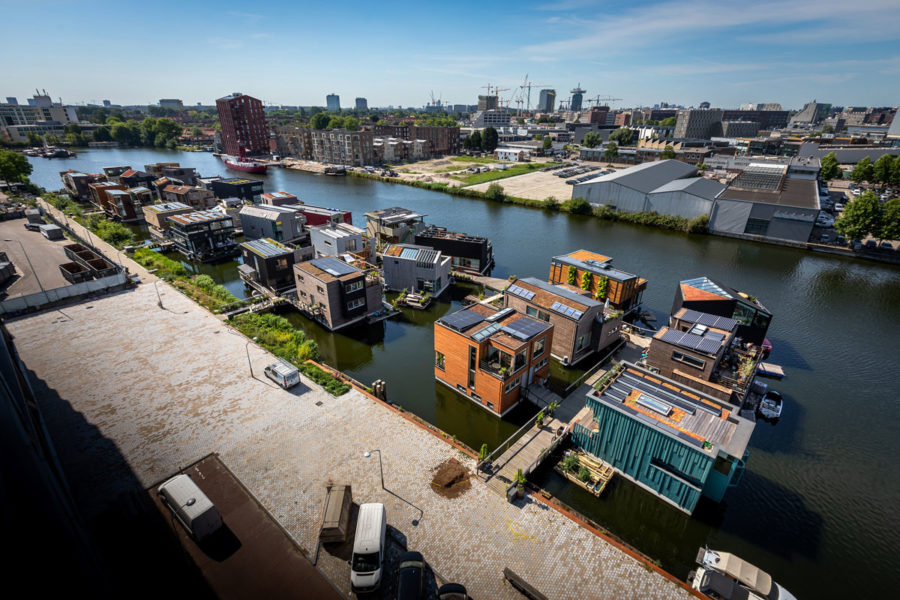
Initiated and developed by the residents themselves, Schoonschip Amsterdam includes 46 self-sustaining floating homes and creates a new model for sustainable living. Photo by Isabel Nabuurs
Schoonschip Amsterdam also functions as an urban ecosystem with shared services like mobility, energy, water, and waste. As sea levels rise and cities search for new housing accommodations, this sustainable floating community provides an innovative solution to global climate change.
Using 500 solar panels and blockchain technology, Schoonschip residences can produce electricity and exchange energy among households.
Yvonne van Sark, a Schoonschip resident and chair of the community board, previously told gb&d that the neighborhood essentially creates its own energy cooperative. “If I’m at home and I generate electricity, and my neighbor is putting on the washing machine and doesn’t have electricity at the time, it’s all interconnected in a smart grid,” she said.
9. Consider ICFs
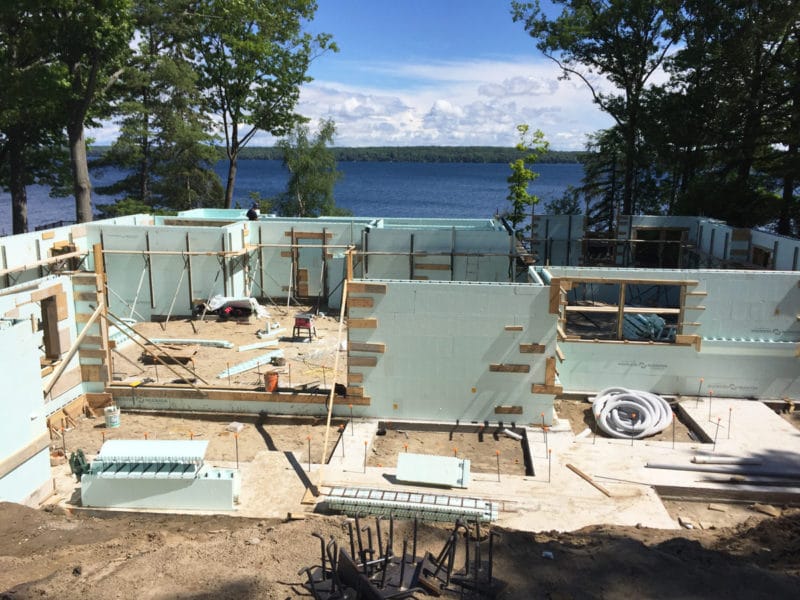
In 2016 the ICFMA commissioned an independent scientific study comparing a wood-framed cavity wall to a standard six-inch core ICF wall. Photo courtesy of IFCMA
Insulated concrete forms (ICFs) are a system of formwork for reinforced concrete created by pouring concrete into insulated EPS foam forms. Once the concrete sets the forms are left in place rather than removed, giving the wall improved insulating qualities over traditional wood-frame walls, reducing a building’s heating needs by 44% and cooling needs by 32%. ICFs are suited for many built environments, whether in cold weather or warm—and because the EPS insulation in ICFs is protected and stable, it won’t fail when needed most.
ICFs aren’t just eco-friendly; they’re also incredibly strong, standing up to extreme weather conditions and the test of time, Brian Corder, marketing chair of the ICFMA (Insulating Concrete Forms Manufacturers Association) and president of BuildBlock, previously told gb&d. As a plastic product, EPS foam insulation will last for centuries, while the concrete itself is capable of weathering tornadoes and hurricanes with ease.
This high durability is extremely important, especially when considering the fact that hurricanes and tropical storms have steadily become stronger since the late 1980s as a result of warming ocean temperatures and rising sea levels. ICF walls can, at a minimum, withstand 150 mile per hour winds, Corder told gb&d.
10. Reclaim Materials
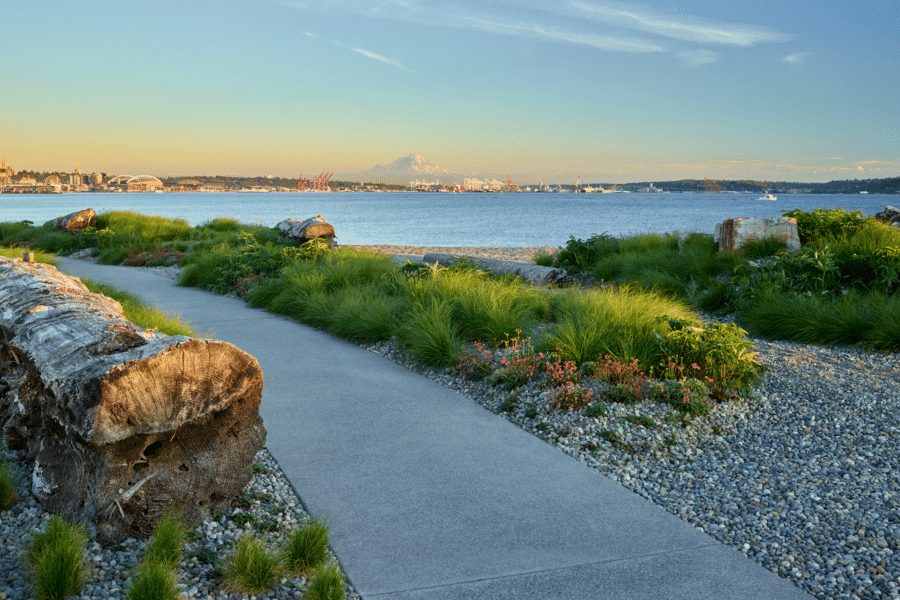
Surfacedesign’s “Beach” project made use of reclaimed materials and other resilient design principles to help restore the Elliot Bay Trail and protect the surrounding waterfront ecosystem. Photo by Marion Brenner
Material reclamation and adaptive reuse were core resilient design principles for both Surfacedesign’s “Beach” project and the adjacent 40-acre Expedia Global Headquarters campus. The existing site (previously the home of Amgen’s Seattle Campus, and before that a series of pier shed buildings) had a series of formal landscape spaces that featured stone paving and monolith features. The stone onsite was stockpiled and reimagined for the new campus, including informal stone groupings nestled into the dune planting on the Beach.
Inspired by the driftwood that washes onto the shores of Washington beaches, knotty spruce “boom sticks” from a decommissioned log mill in Port Angeles were brought to the site and nestled into the planting and gravel dunes. The reclaimed stone boulders and driftwood break up the planting while also functioning as informal seating and play areas.
11. Soil Management
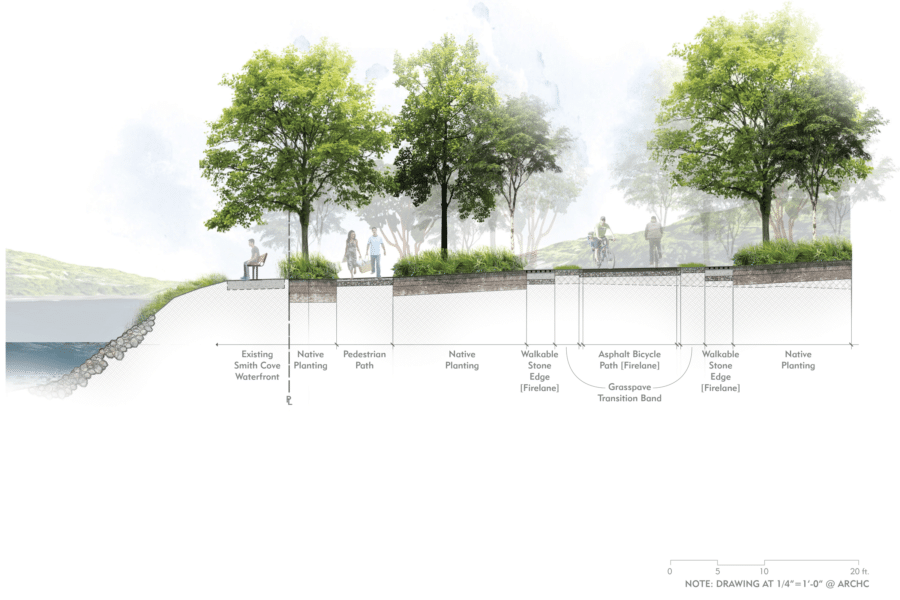
Soil is both the literal foundation upon which resilient buildings rest and the figurative foundation upon which healthy, sustainable communities are built. Illustration courtesy of Surfacedesign
As a living ecosystem and the basis for which almost all food production is made possible, soil is as critical a resource as freshwater and is a key component of resilient design. Healthy soil profiles help reduce erosion, improve groundwater infiltration, facilitate the cultivation of biodiverse landscapes, and sequester large amounts of carbon.
Surfacedesign also developed a comprehensive soil program to build and restore conditions consistent with native soils in the area to support the new vegetation on this Seattle project.
Soil profiles were designed to rebuild natural conditions, including soil horizons similar to those found in the local natural environment. Taking this approach, the soil profiles were constructed that both reproduce natural function with minimal inputs and also meet site-use demands. This approach established sustainable and resilient soils and planting communities that will continue to grow into natural balance with the Seattle environment.
The harvested site soil that had tested positively for ecological benefits and long-term landscape health was used to inoculate the compost and base loam soil used to build the eight custom blends that correlated with the site’s distinct planting communities.
Soil testing and monitoring after installation informed formulation of compost tea blends used to seasonally inoculate the soil and plants, stimulating biological activity and resilience without the use of chemical fertilizers or other inputs.
12. Water Management
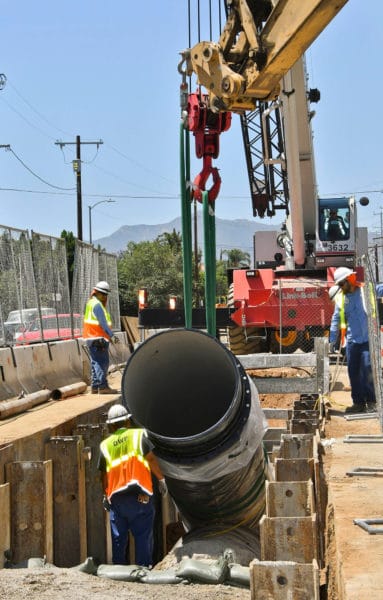
Effective water use and management is key to the design of resilient projects. Photo courtesy of LADWP
Locally available, renewable, or reclaimed resources are more resilient. And reliance on abundant local resources like solar energy and annually replenished groundwater provides greater resilience than depending on nonrenewable resources or resources that have to be trucked or flown in, according to the RDI.
Some places know better than others the struggle of water management in particular. Take California, for example. The state has always been at risk of climate extremes. In a single year California could suffer both epic drought and torrential rains, scorching wildfires and shattering quakes.
Los Angeles has taken up the challenge to plan for a sustainable water supply in a changing climate future. The Los Angeles Department of Water and Power (LADWP) has continually developed the City of Los Angeles’ water supply, becoming a critical component of the city’s economic and population growth. One of the city’s biggest water goals originated with Mayor Eric Garcetti—sourcing 50% of LA’s water locally by 2035. It’s a lofty bar for a city that’s been importing water from hundreds of miles away for generations.
The city’s crown jewel in this effort is set to be its massive groundwater remediation program, recovering local water such as the San Fernando Groundwater Basin, an aquifer and superfund site once polluted by war-time industries, into high-quality sources of drinking water. The city broke ground on the $92 million North Hollywood West Groundwater Treatment Project in January 2018.
“We’re teaming up with the Los Angeles Bureau of Sanitation to take more recycled water and put that to use, ideally get it back into the environment by recharging our groundwater basins,” Marty Adams, chief operating officer at LADWP, told gb&d in 2018.
Andrew Biro contributed to this article.

